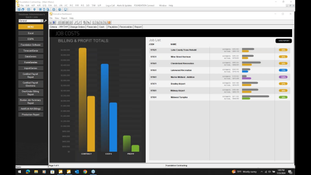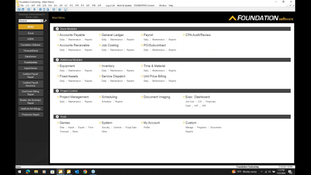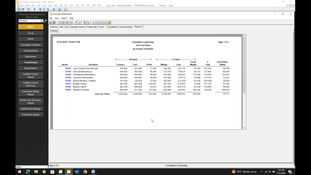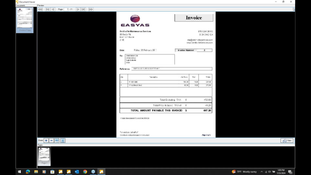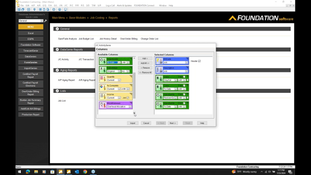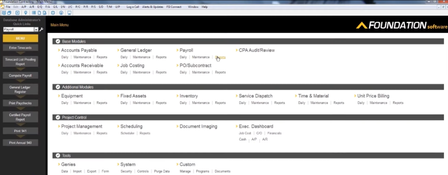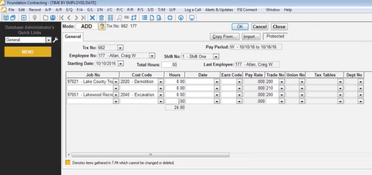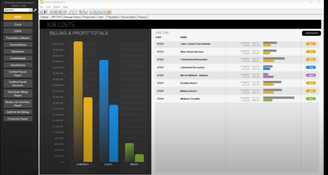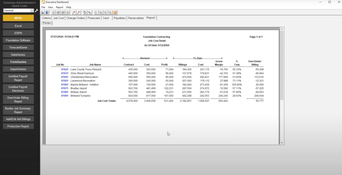Foundation Software
4 Reviews 5/5 ★ ★ ★ ★ ★A construction accounting software featuring detailed job costing and financial reporting.
Product Overview
Foundation is a construction accounting software with detailed job costing and financial reporting. Key financial management features include general ledger, accounts receivable and payable, and CPA audit and review. Foundation also supports automated payroll, scheduling, and inventory control. Its project management feature provides efficient tracking and organization of documents and correspondence.Pros
- Includes financial management, job costing, & project management features
- Automated financial report generation
- Payroll module handles multiple prevailing wage, union, fringe and tax rates
Cons
- Users report some operational glitches and dated data entry methods
- Cannot print corrected W2s in the payroll module
- Some reviewers report usability issues with mobile app
Target Market
Small to medium-sized labor-intensive contractors with 10 to 1,500 employees and annual revenues of $1 million to $250 million. Predominantly used by trade contractors.Video Overview
Foundation software blends standard accounting functionalities like accounts payable, accounts receivable, and general ledger with construction-specific features such as job costing and purchase orders/subcontracts. The integrated modules ensure efficient data flow across different sections, like linking payables to job costing and receivables to the general ledger.
Foundation Software Key Features
- Base Modules: Comprised of job costing, accounts payable, general ledger, payroll, accounts receivable, purchase orders & subcontracts, and CPA audit/review.
- Additional Modules: Includes time & material, unit price billing, inventory, equipment, fixed assets, project management, scheduling, service dispatch, and an executive dashboard.
- Mobile Tools: Features include FOUNDATION mobile, eAccess, and Service Dispatch mobile®.
- Services: Integration with external payroll processing services.
Customization and Additional Modules: Users can enhance their system with a variety of additional modules and integrated tools. These include scheduling, inventory, equipment, time & material, unit price billing, fixed assets, service dispatch, an executive dashboard, and a consolidated general ledger for extensive financial reporting. These modules allow users to customize the core software to their specific business needs.
Foundation Software Modules
- Job costing: Features flexible report designers, bonding reports, user-defined phases, cost codes, change order processing, and accurate tracking of costs against estimates.
- Accounts payable: Encompasses recurring invoices, check voids, sales and use tax tracking, subcontractor retainage tracking, and electronic 1099s.
- General ledger: Offers a flexible financial statement designer, budgets, G/L by job reporting, and consolidated financial reporting for multiple companies.
- Payroll: Manages complex payroll requirements including certified payroll, prevailing wage rates, workers’ compensation, multiple jobs and states, and union compliance.
- Accounts receivable: Provides AIA billing, percent complete billing, retainage tracking, and customizable invoices.
- Purchase orders/subcontracts: Supports multiple jobs per order, change order tracking, and committed cost reporting.
- CPA audit/review: Facilitates easy access to key reports, journal adjustments, and fast data exports.
Additional Modules
- Time & material: Allows user-defined markups, easy billing from register, and prevention of re-billing.
- Unit price billing: Creates estimates, attaches subcontractors to items, and imports line items from various sources.
- Inventory: Manages stocking locations, tracks UPC/DCI codes, and integrates with barcoding software.
- Equipment: Tracks usage hours, schedules maintenance, and retains service history.
- Fixed assets: Supports unlimited depreciation methods and automatic depreciation calculation.
- Project management: Facilitates RFC, RFP, RFI, and submittal tracking, along with integration with Microsoft Outlook®.
- Scheduling: Includes interactive Gantt charts and resource allocation.
- Service dispatch: Features a graphical dispatch board, technician messaging, and equipment warranty tracking.
Target Market:
FOUNDATION is ideally suited for small to medium-sized, labor-intensive contractors, but larger construction businesses also utilize it. The typical clientele ranges from companies with 10 to 1,500 employees and annual revenues of $1 million to $250 million.
The software is predominantly used by trade contractors (80% of users), with the remaining being general contractors and a substantial portion in heavy construction.
Product Overview
Developer Overview
Related Products
User Reviews of Foundation Software
Write a Review
- Industrial Conglomerates
- 11-50 employees
- Annual revenue $1M-$10M
Overall it covers everything that we needed
Overall it covers everything that we needed. It’s very comprehensive - it’s very awesome - just a fully detailed program that’s everything we need. It was definitely less expensive than Jonas. The representative I spoke with was pretty awesome and he guaranteed full customer support and I fully believe so we’re definitely looking forward into that.
Pros
Comprehensive, pricing, support
- Construction & Engineering
- 1-10 employees
- Annual revenue $0-$1M
Good price ability to grow
We have decided to go with Foundation and will be live with them soon. We are coming from QuickBooks and we are anxiously waiting to finally switch to a platform made for our contracting needs.
The pricing was right in the middle of all the systems we reviewed and at the end that was the reason we went with them. I really liked the ability for the system to add on features in the future if we need them.
For example, we outsource our payroll right now but we plan on bringing it internal at some point. It is nice to not have to pay for features we do not need.
Pros
Ability to add on features in the future. Priced in the middle of the market
Foundation Software Review
When I first met with our CPA, he said we chose the right software. That made us feel even better about the choice.
FOUNDATION gives us a lot of opportunities with remote communication
FOUNDATION gives us a lot of opportunities with remote communication. We can take photos on the jobsite and upload them. If there’s an issue, the mechanic can know immediately. And for my reports, I used to have to print everything out, but I don’t even have a binder anymore. I can do it all electronically.

